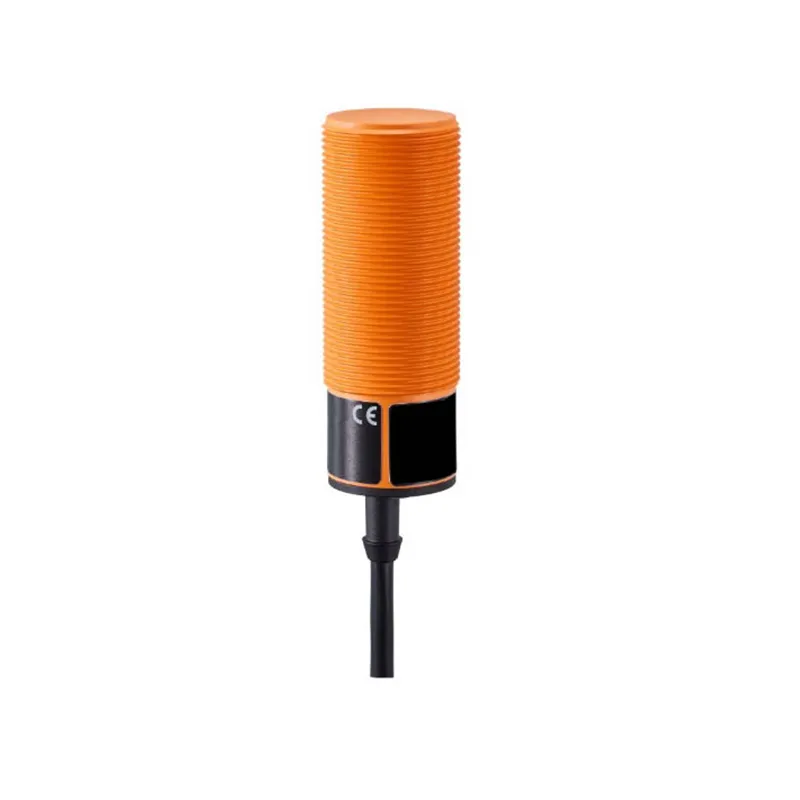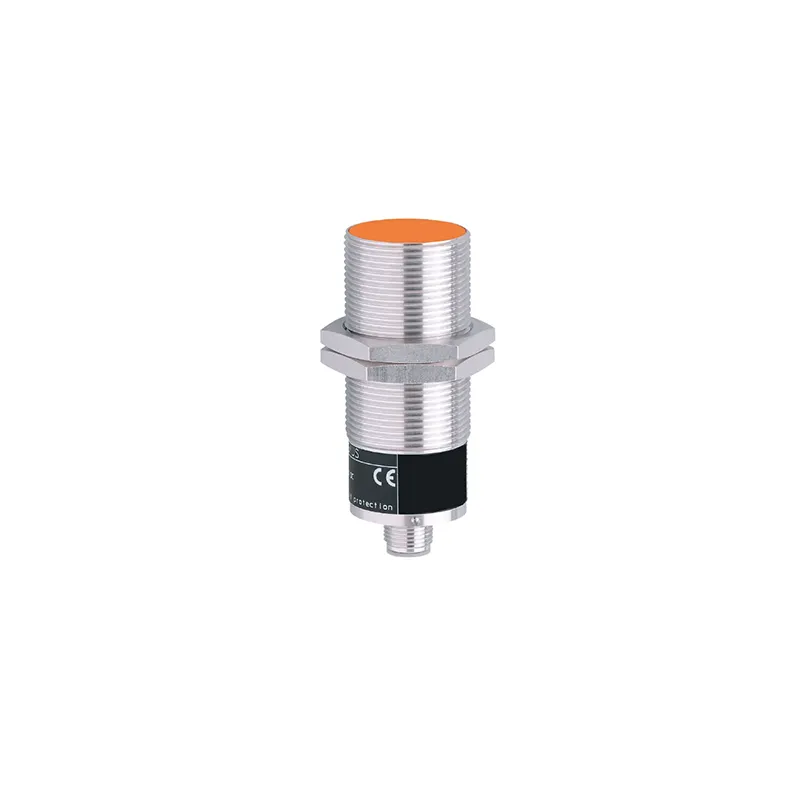Reliable Performance in Demanding Industrial Conditions
In harsh and demanding industrial environments, equipment reliability becomes paramount. Proximity switch technology plays a vital role in maintaining safety and efficiency, particularly in areas exposed to dust, moisture, extreme temperatures, vibrations, or corrosive substances. Selecting the best proximity switch suited for these conditions can significantly reduce downtime, increase accuracy, and extend the overall service life of machinery. These devices are essential for non-contact detection and are known for their rugged design and minimal maintenance requirements.
Understanding Proximity Switch Technology
Operating Principles of Proximity Switches
Proximity switches operate by detecting the presence of objects without physical contact. They utilize electromagnetic fields or emitted light to sense nearby targets. There are several types of proximity switches, including inductive, capacitive, photoelectric, and magnetic models. Inductive proximity switches detect metallic objects, while capacitive versions can detect both metallic and non-metallic materials. The design of each type caters to specific application needs.
Key Features of Durable Proximity Switches
For environments with high mechanical stress or chemical exposure, proximity switches need to be built with reinforced housing, sealed enclosures (typically IP67 or higher), and resistant materials such as stainless steel or industrial-grade plastics. Shock and vibration resistance is also essential. Advanced proximity switch models may incorporate temperature compensation, short-circuit protection, and surge suppression to ensure uninterrupted functionality.

Choosing the Right Proximity Switch for Harsh Conditions
Environmental Compatibility
Before choosing a proximity switch for any application, it’s essential to thoroughly assess the environmental conditions in which the switch will operate. Factors such as moisture, dust, oil mist, or chemical exposure can significantly affect the performance and lifespan of a proximity switch. Additionally, consider whether the equipment will be subjected to extreme hot or cold temperatures, high humidity, or vibration. These variables can influence the choice of switch housing material, sensing technology, and sealing specifications. For example, in washdown environments—common in the food and beverage industry—a proximity switch must have a high ingress protection (IP) rating, such as IP67 or higher, to prevent water intrusion. It should also be constructed from materials like stainless steel or specially coated plastics to resist corrosion and withstand harsh cleaning agents. Failing to account for these environmental conditions can result in premature switch failure, increased maintenance costs, and unexpected downtime. Therefore, selecting a proximity switch that is specifically designed and rated for the intended environment is crucial to ensure long-term reliability and consistent performance.
Mounting and Sensing Distance
In demanding industrial settings, proximity switches must be robust enough to withstand tough conditions while maintaining precise functionality. Heavy-duty environments often involve factors such as vibration, mechanical shock, abrasive particles, or high-traffic machinery, which increase the risk of physical damage. To mitigate this, using proximity switches with extended sensing distances is beneficial, as it allows sensors to be positioned further away from potentially harmful contact zones. Features like adjustable sensing ranges provide added flexibility, enabling fine-tuning based on specific application needs.
The choice between flush and non-flush mounting also plays a critical role. Flush-mounted switches are embedded into a surface, providing better protection against mechanical damage, whereas non-flush mounting allows for greater sensing distances but may require more open space. Additionally, compact sensor designs are ideal for installations with space constraints, such as automated assembly lines or robotic arms.
Equally important is proper sensor alignment and secure mounting. Misalignment or loose installations can lead to inconsistent detection, false triggers, or eventual equipment failure. Ensuring that the proximity switch is correctly oriented and firmly fixed helps maintain long-term accuracy and enhances its overall performance under harsh working conditions.
Industry Applications of Heavy-Duty Proximity Switches
Automotive Manufacturing
In automotive assembly lines, proximity switches are used to detect metal components, monitor door and hood positions, and coordinate robotic systems. The switches must withstand constant vibration and high-speed operations. Their non-contact functionality reduces wear and tear, while their resilience improves operational reliability.
Food and Beverage Processing
Hygienic design and chemical resistance are mandatory in the food and beverage sector. Proximity switches used in these environments must be able to endure high-pressure washdowns and exposure to acidic or alkaline cleaning agents. Stainless steel housing and IP69K ratings are often necessary for compliance and longevity.
Benefits of Using Proximity Switches in Extreme Environments
Increased Equipment Lifespan
Because proximity switches operate without contact, they eliminate the mechanical wear common with traditional switches. In abrasive or high-vibration environments, this leads to longer-lasting sensor systems and fewer replacements, directly reducing maintenance costs.
Enhanced Safety and Process Control
Proximity switches improve safety by ensuring accurate detection of parts, tools, and positioning in real time. This capability is critical in applications involving high-speed machinery or hazardous materials. Additionally, they enable better process control by providing consistent feedback to automation systems.
Emerging Trends in Proximity Switch Development
Integration with Smart Systems
Modern proximity switches are increasingly designed to interface with PLCs, SCADA systems, and IoT-enabled networks. This integration allows for real-time data collection, predictive maintenance, and enhanced diagnostics. Smart proximity switches contribute to Industry 4.0 by enabling intelligent decision-making at every level of production.
Customization and Modularity
Manufacturers are now offering modular proximity switch solutions that can be customized for specific applications. These include configurable output types, different cable lengths, various sensing materials, and mounting accessories. Customization helps users match the exact requirements of their equipment and working conditions.
Maintenance and Troubleshooting Tips
Periodic Inspection and Cleaning
Even the most robust proximity switch needs occasional maintenance. Inspect switches regularly for damage, dirt buildup, or loose connections. Clean using appropriate methods and materials—especially in food-grade or chemical processing settings—to avoid contamination or corrosion.
Diagnosing Signal Issues
If a proximity switch fails to detect accurately, verify alignment, distance to target, and electrical connections. Some advanced models feature LED indicators or diagnostic outputs to assist in troubleshooting. Replacing worn-out or low-quality models with heavy-duty alternatives often resolves recurrent signal problems.
Cost Considerations and ROI
Long-Term Value Over Initial Cost
While heavy-duty proximity switches might have a higher upfront cost, they often offer a superior return on investment. Their longevity, lower maintenance needs, and better performance in adverse conditions lead to fewer interruptions and increased operational uptime.
Bulk Purchasing and Standardization
For businesses operating multiple machines or facilities, standardizing on a specific high-performance proximity switch model can simplify inventory, maintenance, and training. Bulk purchasing also provides cost advantages and ensures consistent quality across applications.
Frequently Asked Questions
What is the difference between inductive and capacitive proximity switches?
Inductive proximity switches detect only metallic objects, while capacitive proximity switches can sense both metallic and non-metallic targets, such as plastic or liquid.
Can proximity switches operate in wet or submerged conditions?
Yes, many proximity switches are designed for wet environments, especially those with IP67 or IP68 ratings. Some can even function in submerged conditions, depending on their construction.
How do I know which proximity switch is best for my equipment?
Consider factors like operating environment, sensing distance, mounting space, and the materials of the target object. Consulting a proximity switch specialist or supplier can help match the right model to your application.
Are there wireless options for proximity switches?
Yes, some manufacturers offer wireless proximity switches for difficult-to-wire applications. These often use battery power and transmit signals via Bluetooth, Zigbee, or proprietary wireless protocols.
Table of Contents
- Reliable Performance in Demanding Industrial Conditions
- Understanding Proximity Switch Technology
- Choosing the Right Proximity Switch for Harsh Conditions
- Industry Applications of Heavy-Duty Proximity Switches
- Benefits of Using Proximity Switches in Extreme Environments
- Emerging Trends in Proximity Switch Development
- Maintenance and Troubleshooting Tips
- Cost Considerations and ROI
- Frequently Asked Questions

